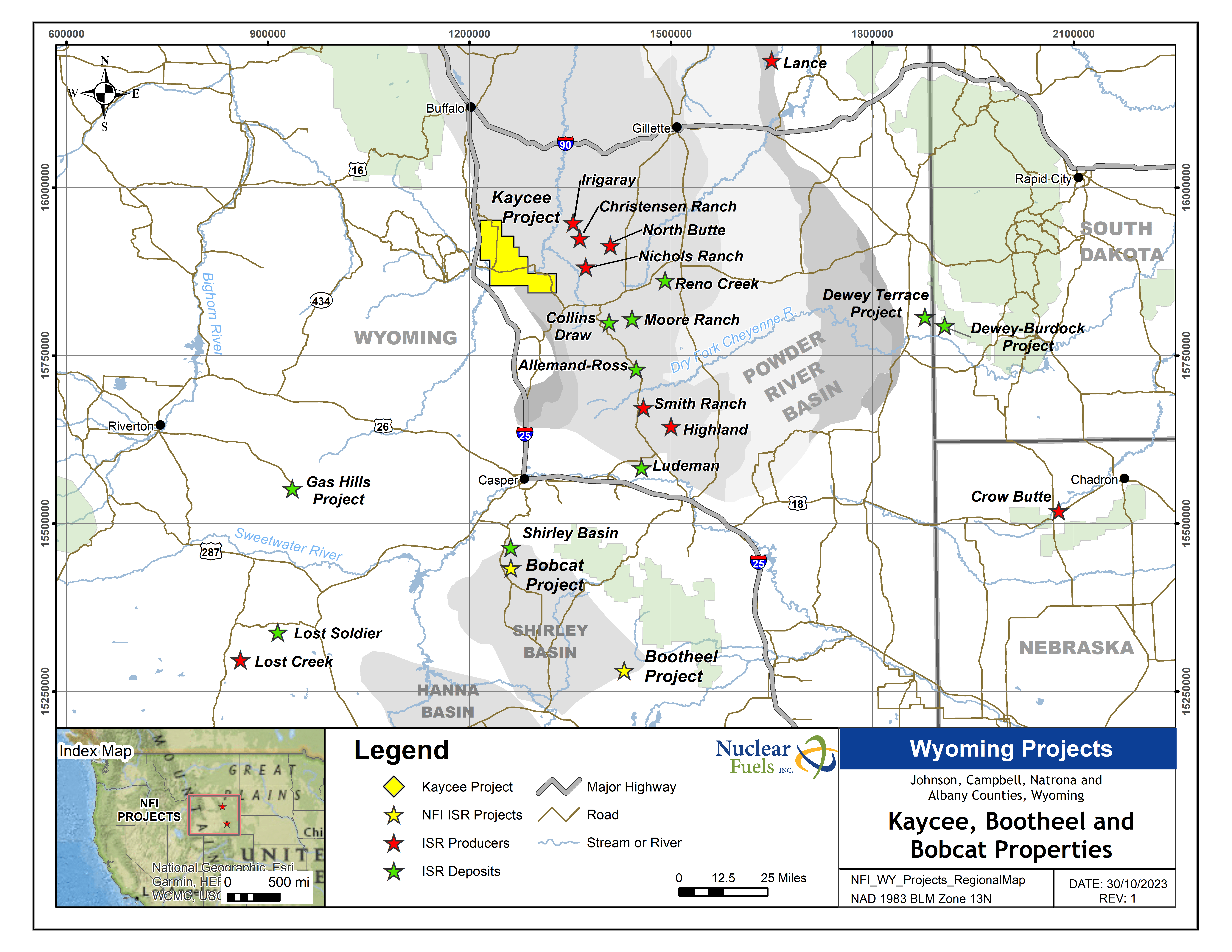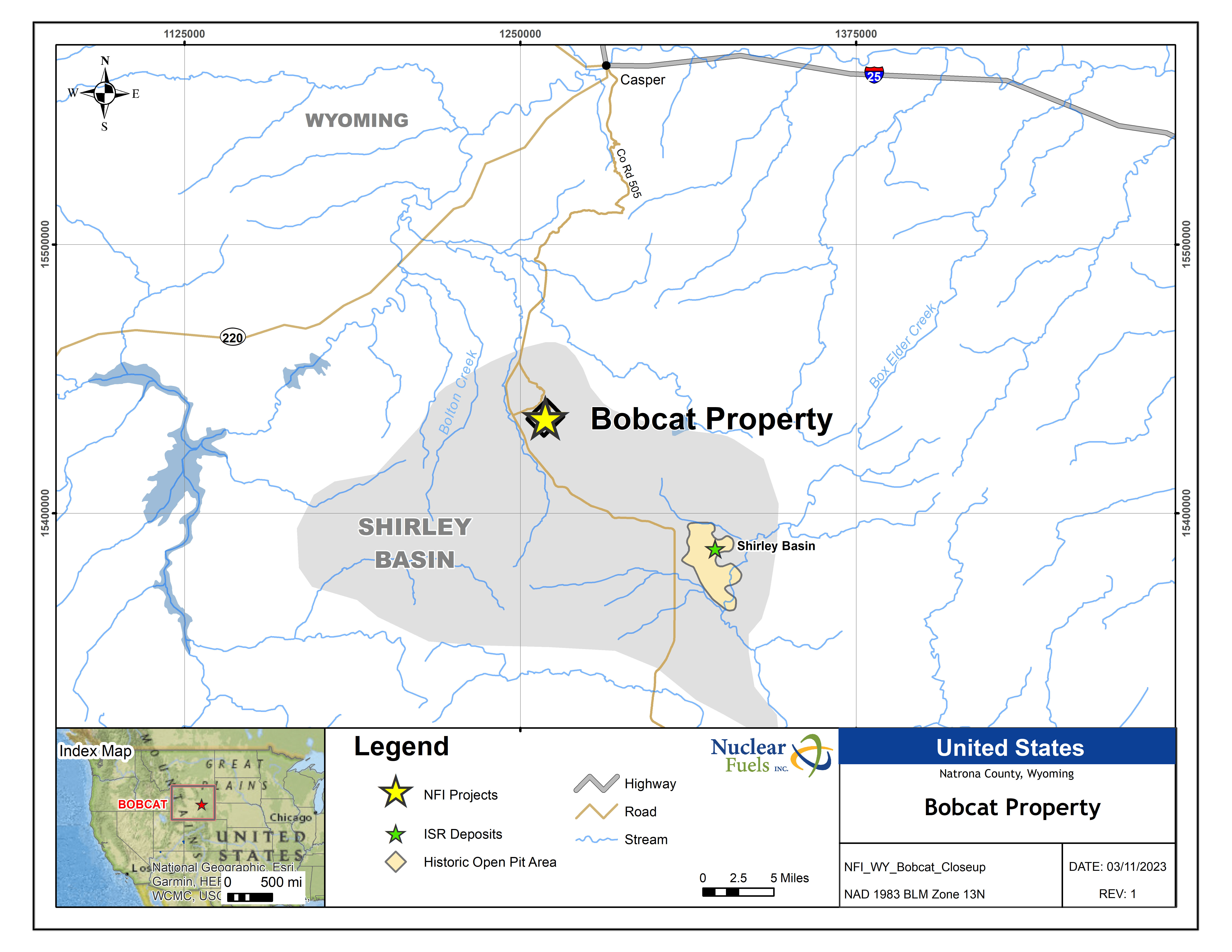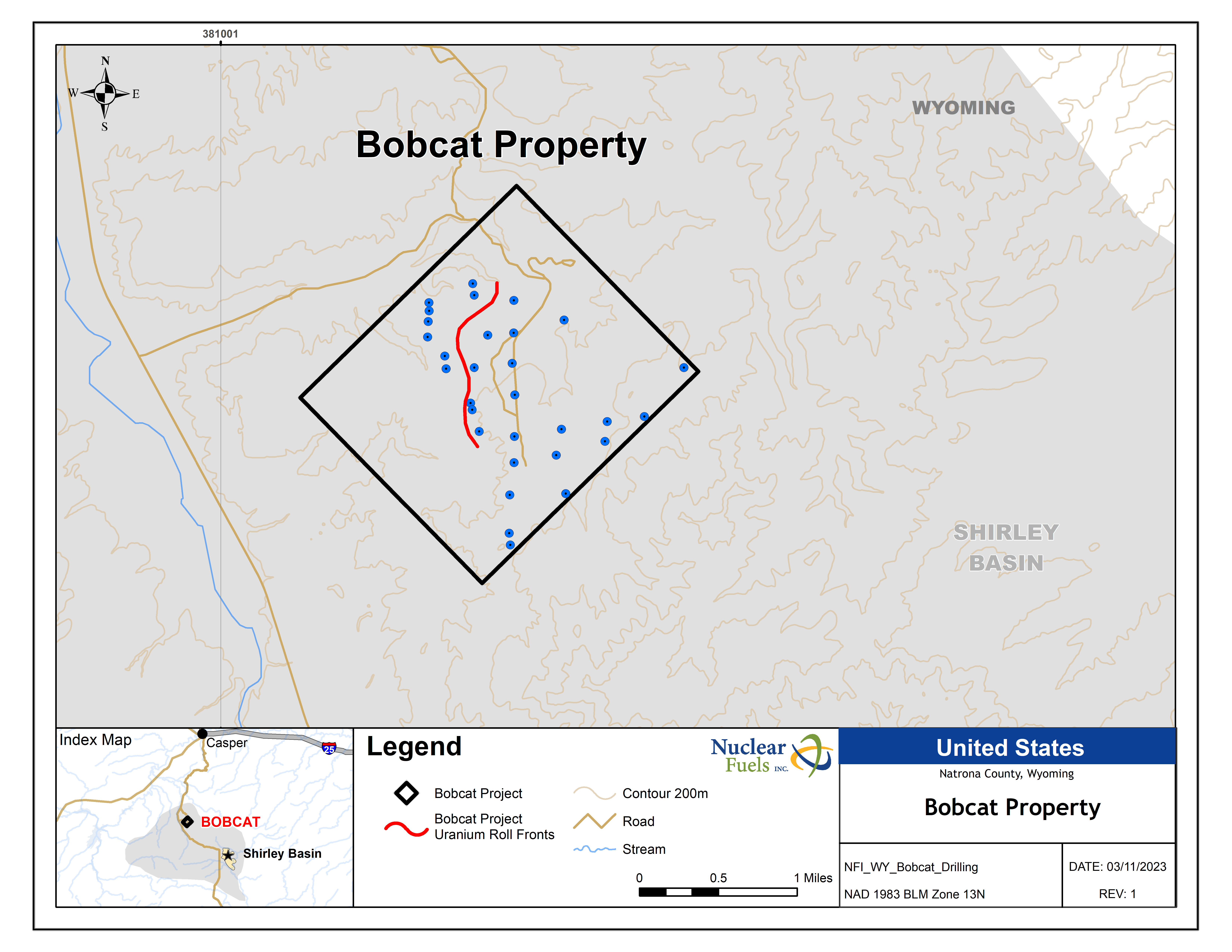Bobcat Uranium Project
Highlights
The Shirley Basin was the site of the first commercial ISR project in the United States
Bobcat Uranium Project
Located 25 miles south of Casper Wyoming in Albany County, the Bobcat Project is located in the Shirley Basin. The Shirley Basin was a proven and prolific producer of uranium credited with over 84 million lbs. produced between 1959 and 1992 from producers including Getty Oil Company, Texaco, Inc., Pathfinder Mines Corporation, Cogema Mining Inc., Although the majority of the district’s production has come from conventional mining, in 1964 the Shirley Basin was home to the first commercial use of the In-Situ Recovery (“ISR”) technique to extract uranium from sandstone-host deposits. ISR is now utilized to extract over 60% of all uranium in the world; since the 1990s all uranium mining in Wyoming has used the ISR process.
More Information
The Shirley Basin is a northwest trending asymmetric basin that formed by subduction-driven Late Cretaceous to early Tertiary tectonism called the Laramide Orogeny. Laramide structuring created the basement cored uplifts that surround the basin. The basin is named for the Shirley Mountains that lie on the southwestern margin. The mountains were named after freighter John Shirley who hauled supplies to homesteaders there in the mid-1800’s (Shirley’s Mountains). The Granite Mountains (aka Sweetwater Arch) lie to the west and Bates Hole, a prominent erosional feature drained by Stinking Creek, is the north margin of the basin. The Laramie Range marks the northeastern and eastern border. Northeast-trending Flat Top anticline is the basin’s structural divide with the Laramie Basin to the south. This feature is part of the Wyoming Lineament which is a broad zone of east northeast-trending folds above a major Precambrian shear zone in central Wyoming formed during the assembly of the Wyoming Craton (Ransome,1915,Blackstone,1983).
Uranium deposits in the Eocene Wind River Formation were discovered by Teton Exploration in 1955. The leasing boom took off in 1957 with several companies acquiring leases. Utah Mining began underground mining in 1959 in the northwestern part of the district. In 1964 they converted to In-Situ Recovery (“ISR”). This was the first use of the ISR uranium mining technique in the United States. After 1968, Utah Mining began strip mining of the ore. Uranium ore was shipped to the Lucky Mc mill in the Gas Hills, 145 miles west, before an onsite mill was constructed in 1969. The mill began operations in 1971. Conventional mine operations were suspended by Pathfinder in the 1990s due to low uranium pricing.
*Readers are cautioned that a qualified person has not done sufficient work to classify any of the historical estimates as current mineral resources or mineral reserves as defined by NI 43-101. The Company is not treating the historical estimates as current mineral resources or reserves as defined by NI 43-101. Further compilation of the historic geological and drilling data, resource modelling and additional drilling will be necessary to convert the historic estimates outlined above to NI 43- 101 conforming mineral resources. The historic resource is based on information from Western Standard (1972).




